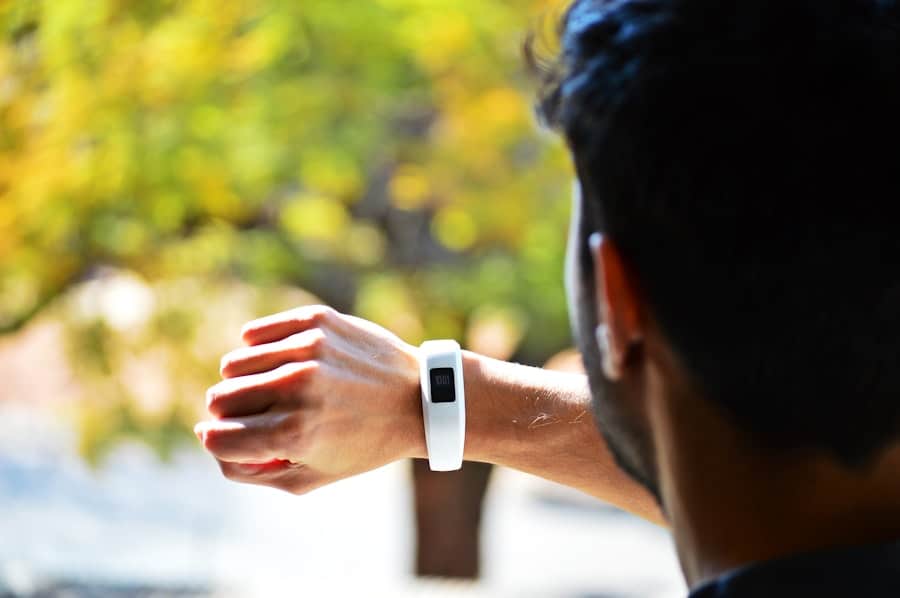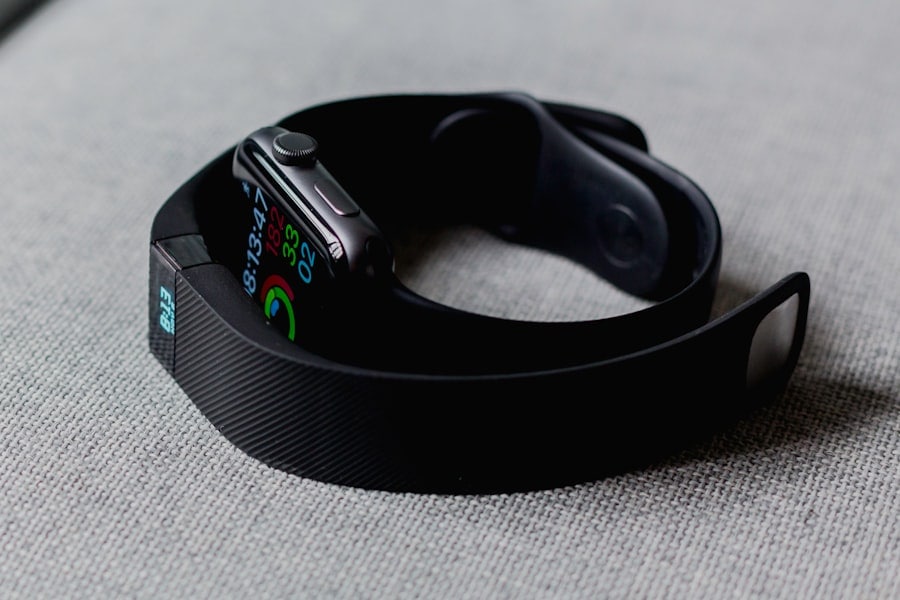The intersection of biotechnology and public health has ushered in a new era of monitoring and managing health outcomes on a global scale. Innovations in biotech have transformed traditional public health practices, enabling more precise, efficient, and timely responses to health threats. These advancements encompass a wide range of technologies, including genetic sequencing, biosensors, and data analytics, which collectively enhance our ability to track diseases, monitor health trends, and respond to outbreaks.
As the world grapples with emerging infectious diseases and chronic health conditions, the role of biotech in public health monitoring becomes increasingly critical. Biotech innovations are not merely supplementary tools; they represent a paradigm shift in how public health data is collected, analyzed, and utilized. For instance, the rapid development of diagnostic tests during the COVID-19 pandemic highlighted the potential of biotech to respond swiftly to health crises.
These innovations have also paved the way for more personalized approaches to health monitoring, allowing for tailored interventions based on individual genetic profiles and environmental exposures. As we delve deeper into the impact of these innovations, it becomes evident that they are reshaping the landscape of public health monitoring in profound ways.
Key Takeaways
- Biotech innovations have revolutionized public health monitoring, leading to more efficient disease surveillance and outbreak detection.
- Advancements in biotech have enabled early disease diagnosis and monitoring, improving the overall public health outcomes.
- Biotech plays a crucial role in improving access to public health monitoring, especially in underserved communities and remote areas.
- Biotech innovations are being used to track and monitor environmental health hazards, providing valuable data for public health interventions.
- The integration of biotech and big data has enhanced public health monitoring, allowing for more comprehensive and real-time analysis of health trends and patterns.
The Impact of Biotech Innovations on Disease Surveillance and Outbreak Detection
Biotech innovations have significantly enhanced disease surveillance systems, enabling public health officials to detect outbreaks with unprecedented speed and accuracy. Traditional surveillance methods often relied on passive reporting systems that could lag behind actual disease spread. In contrast, modern biotech tools such as genomic sequencing and real-time data analytics allow for proactive monitoring of pathogens.
For example, the use of next-generation sequencing (NGS) has revolutionized our ability to identify and characterize viral strains, facilitating rapid responses to emerging threats like Zika or Ebola. Moreover, the integration of biosensors into public health monitoring systems has further improved outbreak detection capabilities. These devices can continuously collect data on environmental conditions and biological markers, providing real-time insights into potential health risks.
For instance, wearable biosensors that monitor physiological parameters can alert users to early signs of infection, prompting timely medical intervention. This shift from reactive to proactive surveillance not only enhances our ability to respond to outbreaks but also aids in understanding disease transmission dynamics, ultimately leading to more effective public health strategies.
Advancements in Biotech for Early Disease Diagnosis and Monitoring
The advancements in biotechnology have led to significant improvements in early disease diagnosis and monitoring, which are crucial for effective public health interventions. Rapid diagnostic tests that utilize molecular techniques such as polymerase chain reaction (PCR) have become standard practice in identifying infectious diseases. These tests can detect pathogens at very low concentrations, allowing for early intervention before widespread transmission occurs.
For instance, during the COVID-19 pandemic, PCR tests became essential tools for identifying infected individuals quickly, thereby curbing the spread of the virus. In addition to infectious diseases, biotech innovations are also making strides in the early detection of chronic conditions such as cancer and diabetes. Liquid biopsy techniques, which analyze circulating tumor DNA in blood samples, enable non-invasive cancer screening and monitoring.
This approach not only improves patient comfort but also allows for earlier detection of malignancies when treatment is most effective. Furthermore, advancements in wearable technology that monitor glucose levels or other biomarkers provide continuous data that can inform personalized treatment plans for chronic disease management.
The Role of Biotech in Improving Access to Public Health Monitoring
Access to public health monitoring has historically been a challenge, particularly in low-resource settings where infrastructure may be lacking. However, biotech innovations are bridging this gap by providing cost-effective solutions that enhance accessibility. Point-of-care testing devices, which deliver rapid results without the need for extensive laboratory facilities, are transforming how healthcare is delivered in underserved communities.
These devices can be deployed in remote areas, allowing healthcare workers to diagnose and treat patients on-site. Moreover, mobile health (mHealth) applications are leveraging biotechnology to improve access to health information and services. These applications can facilitate remote monitoring of patients’ health status and provide educational resources about disease prevention and management.
For example, mHealth platforms that integrate biosensors can track vital signs and send alerts to healthcare providers if abnormalities are detected. This not only empowers individuals to take charge of their health but also ensures that healthcare resources are allocated efficiently based on real-time data.
Biotech Innovations in Tracking and Monitoring Environmental Health Hazards
Environmental health hazards pose significant risks to public health, and biotech innovations are playing a crucial role in tracking and monitoring these threats. Advances in environmental genomics allow researchers to analyze microbial communities in various ecosystems, providing insights into how environmental changes impact human health. For instance, studying the microbiome of water sources can help identify contamination events that may lead to waterborne diseases.
Additionally, biosensors designed to detect specific environmental toxins are becoming increasingly sophisticated. These sensors can monitor air quality by detecting pollutants such as particulate matter or volatile organic compounds in real time. By providing immediate feedback on environmental conditions, these technologies enable communities to respond swiftly to hazardous situations.
For example, during wildfires or industrial accidents, real-time monitoring can inform evacuation plans or public health advisories, ultimately protecting vulnerable populations from exposure.
The Integration of Biotech and Big Data in Public Health Monitoring
The integration of biotechnology with big data analytics is revolutionizing public health monitoring by enabling more comprehensive analyses of health trends and outcomes. The vast amounts of data generated by biotech tools—ranging from genomic sequences to environmental measurements—can be harnessed using advanced analytical techniques to uncover patterns that inform public health strategies. Machine learning algorithms can process this data at scale, identifying correlations between environmental factors and disease incidence that may not be apparent through traditional analysis.
For instance, during the COVID-19 pandemic, data from genomic sequencing was combined with epidemiological data to track virus mutations and their impact on transmissibility and vaccine efficacy. This integration allowed public health officials to make informed decisions about vaccination strategies and public health interventions based on real-time insights. Furthermore, predictive modeling powered by big data can forecast potential outbreaks or identify at-risk populations, enabling proactive measures that mitigate health risks before they escalate.
Challenges and Ethical Considerations in Biotech Innovations for Public Health Monitoring
Despite the promising potential of biotech innovations in public health monitoring, several challenges and ethical considerations must be addressed. One significant concern is data privacy and security. The collection and analysis of personal health information raise questions about how this data is stored, shared, and used.
Ensuring that individuals’ privacy is protected while still allowing for effective public health monitoring is a delicate balance that requires robust regulatory frameworks. Additionally, there is the challenge of equitable access to biotech innovations. While these technologies have the potential to improve public health outcomes significantly, disparities in access can exacerbate existing inequalities.
Low-resource settings may lack the infrastructure or funding necessary to implement advanced biotech solutions effectively. Addressing these disparities requires concerted efforts from governments, NGOs, and private sector stakeholders to ensure that all communities benefit from advancements in biotechnology.
Future Trends and Potential of Biotech in Public Health Monitoring
Looking ahead, the future of biotech in public health monitoring is poised for remarkable growth and innovation. One emerging trend is the increasing use of artificial intelligence (AI) in conjunction with biotech tools.
This synergy between AI and biotech will likely lead to more effective surveillance systems that can adapt rapidly to changing health landscapes. Another promising area is the development of personalized medicine approaches that leverage genetic information for tailored public health interventions. As our understanding of genomics continues to evolve, it will become possible to design targeted strategies that consider individual genetic predispositions alongside environmental factors.
This could lead to more effective prevention programs and treatment plans that address the unique needs of diverse populations. In conclusion, the integration of biotechnology into public health monitoring represents a transformative shift that holds immense potential for improving global health outcomes. As we continue to innovate and refine these technologies, it is essential to remain vigilant about ethical considerations and strive for equitable access across all communities.
The future promises exciting advancements that will further enhance our ability to monitor and respond to public health challenges effectively.
A related article to How Biotech Innovations Are Transforming Public Health Monitoring is To Buy Time for a Failing Startup, Recreate the Engineering Process. This article discusses strategies for reviving a struggling startup by reevaluating and restructuring the engineering process. By implementing innovative approaches and problem-solving techniques, failing startups can potentially turn their fortunes around and achieve success in the competitive business landscape.
FAQs
What is biotech innovation in public health monitoring?
Biotech innovation in public health monitoring refers to the use of advanced biotechnological tools and techniques to monitor and improve public health. This includes the development of new diagnostic tools, vaccines, and treatments, as well as the use of biotechnology to track and analyze public health data.
How are biotech innovations transforming public health monitoring?
Biotech innovations are transforming public health monitoring by enabling more accurate and rapid diagnosis of diseases, the development of new vaccines and treatments, and the ability to track and analyze public health data in real-time. This allows for more effective and targeted public health interventions.
What are some examples of biotech innovations in public health monitoring?
Examples of biotech innovations in public health monitoring include the development of rapid diagnostic tests for infectious diseases, the use of genetic sequencing to track disease outbreaks, and the development of new vaccines and treatments using biotechnological methods.
How do biotech innovations benefit public health monitoring?
Biotech innovations benefit public health monitoring by improving the accuracy and speed of disease diagnosis, enabling the development of new vaccines and treatments, and providing better tools for tracking and analyzing public health data. This ultimately leads to more effective public health interventions and improved health outcomes for the population.



